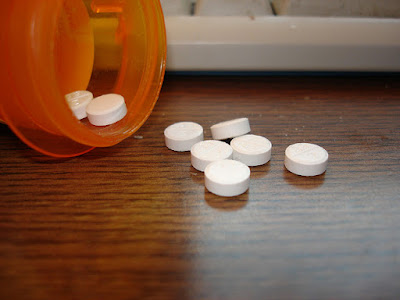 |
| Image Credit: Flickr |
Author: Erica Schramm, MS4
Cooper Medical School of Rowan University
Originally Published: Modern Resident April/May 2016
Calcium channel blockers (CCBs) are used to treat a variety of common conditions such as hypertension, cardiac dysrhythmias and headaches. But use of CCBs is not without risk, particularly in cases of toxicity and overdose. CCBs are the ninth most widely prescribed class of drugs in the United States, accounting for an estimated 92 million prescriptions filled per year. The American Association of Poison Control Centers’ 2008 data noted over 10,000 human exposures to CCBs and 60 deaths associated with CCB overdose.[1]
What are the signs of CCB overdose?
The most common signs of CCB overdose are hypotension, sinus bradycardia, and shock. Other associated signs of overdose are hyperglycemia, pulmonary edema, myoclonus, dizziness, syncope, seizures, nausea, vomiting and acute kidney injury. Sustained release formulations can cause initial signs of overdose up to 12 hours post-ingestion. Diagnosis is clinical and thorough history taking is key to identifying CCB overdose. Patients taking CCBs who present with signs of toxicity should be questioned about intentional or unintentional overdose. Physicians should also inquire about details of how and when the patients take their medication to identify potential overdose.[1]
Differential diagnosis of CCB overdose may include: beta blocker overdose, tricyclic antidepressant overdose, acute coronary syndromes and sepsis. Recommended testing is focused on clinical management of the systemic manifestations of overdose and hypoperfusion – including 12 lead ECG, chest X-ray, arterial blood gas, serum electrolytes, BUN and creatinine.[1,2]
How is CCB overdose treated?
General management includes continuous cardiac monitoring, airway management, fluid resuscitation and GI decontamination. Initial treatment of symptomatic bradycardia and atrioventricular block can be attempted with atropine, and external or internal pacemaker therapy may be required. If capture is achieved, heart rate should be set at 60 bpm.[1] Administration of calcium solutions (10% calcium chloride 10-20mL IV or 10% calcium gluconate 30-60mL IV followed by repeated boluses or continuous infusion) is also recommended for CCB overdose.[2,3] Glucagon is used to treat bradycardia as well as hypotension. The recommended initial dose of glucagon is 2-5mg IV, followed by repeated boluses, up to a total of 10mg.[2] In cases of severe CCB overdose, insulin-euglycemia therapy may be initiated with initial bolus of 1unit/kg of regular insulin along with 0.5g/kg of dextrose, followed by an infusion of regular insulin at 1.0units/kg/h with continuous dextrose infusion, beginning at 0.5g/kg/h. Blood glucose should be monitored every 30 minutes and insulin titrated to maintain euglycemia.[3] Vasopressor therapy may be necessary for an unstable patient with persistent hypotension not responding to the above interventions.[3]
References:
- Brooks DE, Katz KD. Calcium channel blocker toxicity. In: Vincent JL, Abraham E, Moore FA, Kochanek PM, and Fink M, eds. Textbook of Critical Care. 6th ed. Philadelphia, PA: Elsevier Saunders; 2011.
- Morgan DL, Borys DJ. Poisoning. In: Stone CK, Humphries RL, eds. Current Diagnosis and Treatment in Emergency Medicine. 7th ed. McGraw-Hill: 2011.
- Jang DH, DeRoos FJ. Calcium Channel Blockers. In: Hoffman RS, Howland MA, Lewin NA, Nelson LS, Goldfrank LR, eds. Goldfrank’s Toxicologic Emergencies. 10th ed. McGraw-Hill: 2015.
